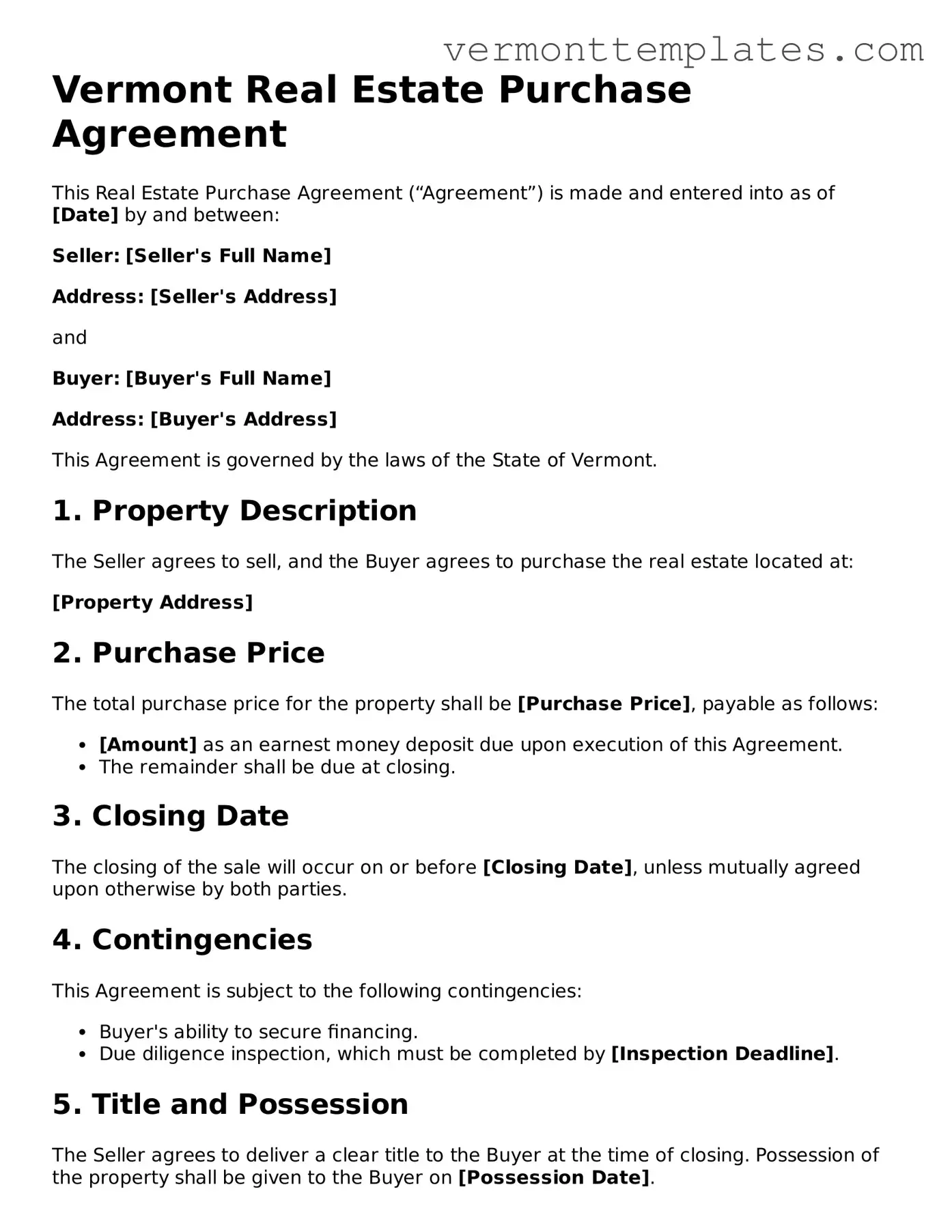Vermont Real Estate Purchase Agreement
This Real Estate Purchase Agreement (“Agreement”) is made and entered into as of [Date] by and between:
Seller: [Seller's Full Name]
Address: [Seller's Address]
and
Buyer: [Buyer's Full Name]
Address: [Buyer's Address]
This Agreement is governed by the laws of the State of Vermont.
1. Property Description
The Seller agrees to sell, and the Buyer agrees to purchase the real estate located at:
[Property Address]
2. Purchase Price
The total purchase price for the property shall be [Purchase Price], payable as follows:
- [Amount] as an earnest money deposit due upon execution of this Agreement.
- The remainder shall be due at closing.
3. Closing Date
The closing of the sale will occur on or before [Closing Date], unless mutually agreed upon otherwise by both parties.
4. Contingencies
This Agreement is subject to the following contingencies:
- Buyer's ability to secure financing.
- Due diligence inspection, which must be completed by [Inspection Deadline].
5. Title and Possession
The Seller agrees to deliver a clear title to the Buyer at the time of closing. Possession of the property shall be given to the Buyer on [Possession Date].
6. Default
If either party defaults under this Agreement, the non-defaulting party may seek remedies in accordance with Vermont state laws.
7. Additional Terms
Additional terms may be added here:
[Any Additional Terms]
8. Signatures
IN WITNESS WHEREOF, the parties hereto have executed this Agreement as of the day and year first above written.
______________________________
Seller's Signature
______________________________
Buyer's Signature
